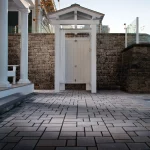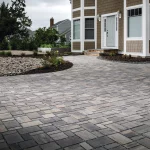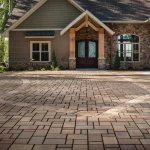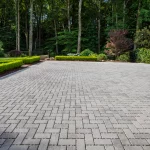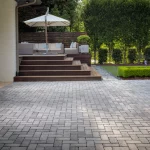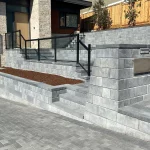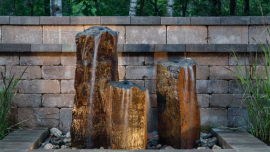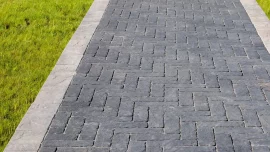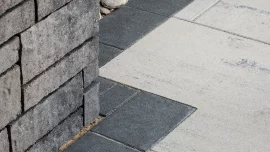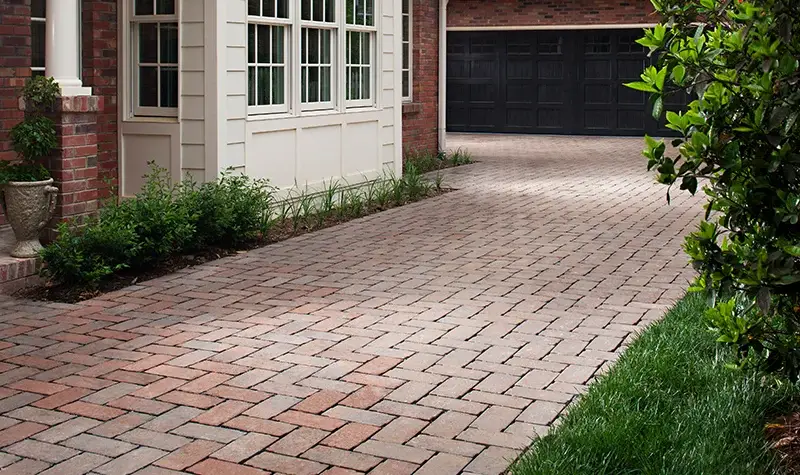
Pavers vs. Concrete: Making the Case for Pavers in Your Outdoor Spaces
When it comes to designing outdoor spaces, one of the critical decisions you’ll face is choosing the right material for your paving needs. While concrete has long been a popular choice, pavers offer a host of advantages that make them a compelling alternative. Let’s delve into why choosing pavers over concrete can transform your outdoor areas and elevate their functionality, aesthetics, and longevity.
1. Design Versatility:
Pavers: One of the most significant advantages of pavers is their versatility in design. Available in a wide range of colors, shapes, textures, and patterns, pavers offer virtually limitless customization options. Whether you’re aiming for a classic, rustic look or a sleek, modern design, pavers can be arranged in various configurations to achieve the desired aesthetic.
Concrete: While concrete offers some flexibility in terms of finishes and textures, it often lacks the diversity of design options available with pavers. Concrete’s appearance is generally uniform and can be less visually interesting compared to the intricate patterns and designs achievable with pavers.
2. Durability and Maintenance:
Pavers: Pavers are known for their exceptional durability and resistance to cracking, making them an ideal choice for high-traffic areas. Additionally, if a paver becomes damaged or stained, it can be easily replaced without disturbing surrounding pavers, providing a cost-effective and convenient solution for maintenance.
Concrete: While concrete is durable, it is susceptible to cracking over time, especially in areas with freeze-thaw cycles or heavy vehicle traffic. Repairing cracked or damaged concrete can be labor-intensive and costly, requiring extensive patching or resurfacing to restore its appearance and integrity.
3. Installation and Accessibility:
Pavers: Installing pavers is a relatively straightforward process that typically involves laying them on a base of compacted gravel or sand. This allows for flexibility in design and ensures proper drainage, reducing the risk of water pooling and erosion. Additionally, pavers can be easily removed and adjusted to accommodate changes in grade or access requirements, making them suitable for projects with specific accessibility needs.
Concrete: Pouring and curing concrete is a more involved process that requires careful planning and preparation. Concrete must be poured to specific thickness and slope requirements to prevent cracking and ensure proper drainage. Once poured, concrete cannot be easily adjusted or removed, making it less adaptable to changes in terrain or accessibility needs.
4. Aesthetics and Curb Appeal:
Pavers: The intricate patterns and textures of pavers add visual interest and curb appeal to outdoor spaces, enhancing their overall aesthetics. Whether used for driveways, walkways, patios, or pool decks, pavers can create a cohesive and inviting atmosphere that complements the surrounding landscape.
Concrete: While concrete offers a clean and uniform appearance, it can sometimes appear monotonous or bland, especially in larger expanses. Decorative techniques such as stamping or staining can help enhance concrete’s visual appeal, but they may not offer the same level of customization as pavers.
5. Environmental Impact:
Pavers: Many pavers are made from recycled materials and manufactured using environmentally friendly processes, making them a sustainable choice for outdoor paving projects. Additionally, the permeable nature of pavers allows rainwater to infiltrate the ground, reducing runoff and replenishing groundwater supplies.
Concrete: Concrete production is associated with high energy consumption and carbon emissions, making it less environmentally friendly compared to pavers. Additionally, concrete’s impermeable surface can contribute to stormwater runoff and water pollution if not properly managed.
In conclusion, while concrete remains a popular choice for outdoor paving projects, pavers offer a host of advantages that make them a superior option in many cases. From their design versatility and durability to their ease of installation and environmental sustainability, pavers provide a compelling alternative that can elevate the functionality, aesthetics, and longevity of your outdoor spaces. When considering your next outdoor project, choosing pavers over concrete may be the key to unlocking the full potential of your design vision.

